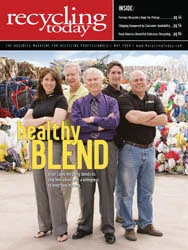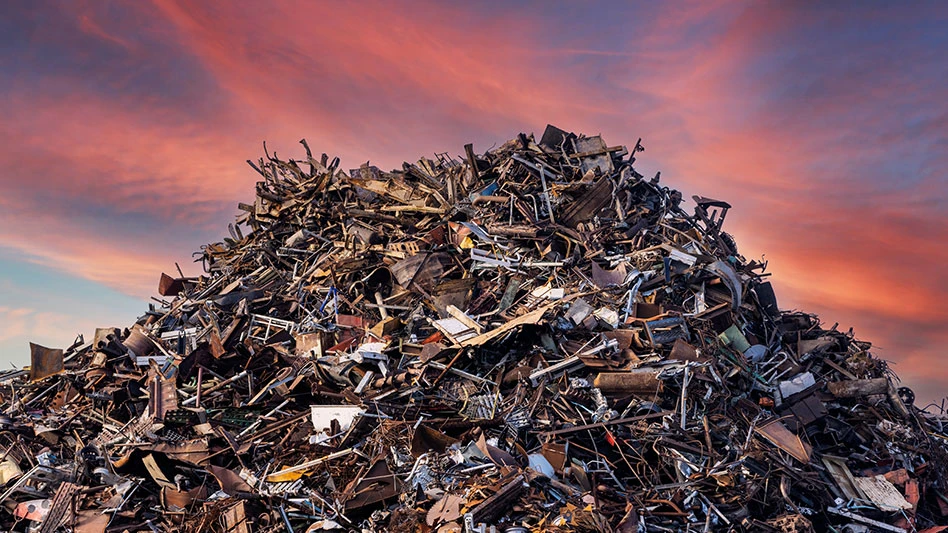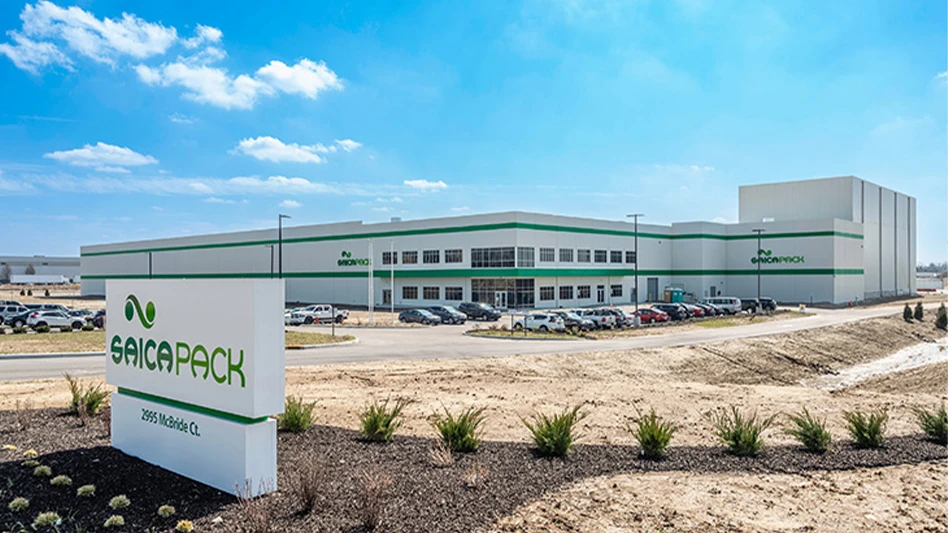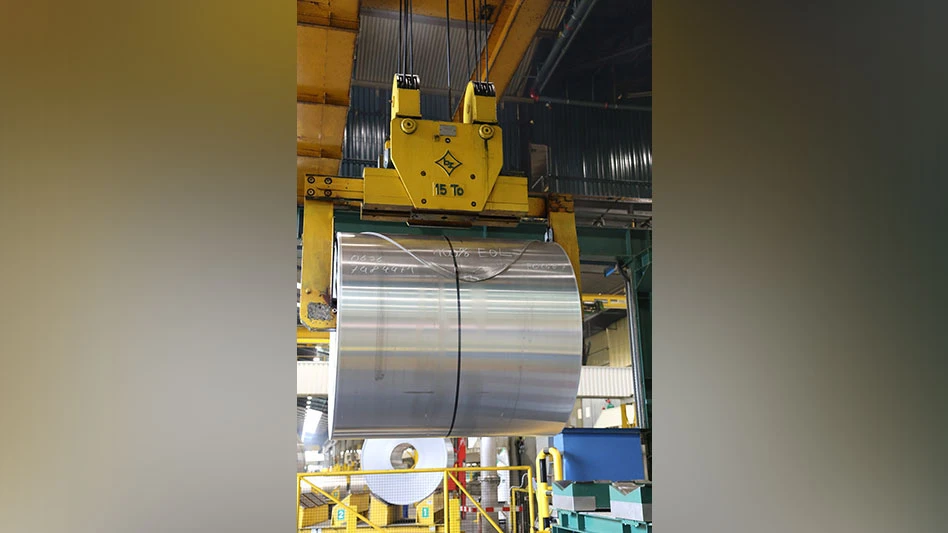For a long time, speculation had it that scavenging was a big problem in Michigan’s Southeastern Oakland County Resource Recovery Authority (SOCRRA) district. However, no one knew the actual economic impact scavenging had on SOCRRA until a routine examination of receipts resulted in some interesting findings.
INSIDE SOCRRA
SORCCA, based in Royal Oak, Mich., has 12 member municipalities—Berkley, Beverly Hills, Birmingham, Clawson, Ferndale, Hazel Park, Huntington Woods, Lathrup Village, Oak Park, Pleasant Ridge, Royal Oak and Troy—with roughly 100,000 households, representing 25 percent of the county’s total population.
In April 2005, construction began to replace the plastic bottle sorting line at the SOCRRA material recovery facility (MRF) with a mixed container sorting line, in anticipation of SOCRRA allowing members to switch to dual-stream recyclables collection mode.
As a result of the RFP process and the consolidation of all services into a single procurement contract, including collection hauling, the 12 SOCRRA communities were projected to save 10 percent annually in rubbish costs during the first operating year.
Even though a nationally publicized RFP was issued, SOCRRA eventually contracted with three local rubbish collection firms to service the 12 member communities for 10 years with a 10-year renewal option. SOCRRA ultimately approved three contracts that saved the 12 communities a total of $2.7 million, or an average of 16.2 percent in the 2007-2008 fiscal year.
1. Refuse Tonnages Delivered to the SOCRRA Transfer Station
|
|
July ’07 - Feb. ’08* |
July ’08 - Feb. ’09* |
Change |
|
Berkley |
4,250 |
3,985 |
-6% |
|
Bevery Hills |
2,649 |
2,554 |
-4% |
|
Birmingham |
6,373 |
6,033 |
-5% |
|
Clawson |
3,343 |
3,175 |
-5% |
|
Ferndale |
6,959 |
6,506 |
-7% |
|
Hazel Park |
5,010 |
4,524 |
-10% |
|
Hunt Woods |
1,576 |
1,475 |
-6% |
|
Lathrup Village |
1,341 |
1,062 |
-21% |
|
Oak Park |
6,693 |
6,435 |
-4% |
|
Pleasant Ridge |
947 |
833 |
-12% |
|
Royal Oak |
17,027 |
15,906 |
-7% |
|
Troy |
20,796 |
18,862 |
-9% |
|
|
76,964 |
71,350 |
-7% |
ADDING IT UP
With a thorough historical database of financial information relative to MRF operations, SOCRRA regularly assesses its operations, appreciating "avoided disposal costs" as well as actual revenue from the sale of processed recyclables. In other words, for every ton of recyclables collected at the curb, about $25 of the value comes from avoiding trashing the items, while SOCRRA averages more than $100 from the sale of each ton of material from its MRF.
SOCRRA currently pays its members $55 per ton for the recyclables collected, but when all is said and done, the net cost for providing curbside service (again, including avoided disposal and revenues) amounts to $10 to $15 per home per year, depending on participation, setout rates and material market values. Therefore, the gross amount of materials generated and recycled becomes very important to each municipality, as well as to the state of Michigan in general.
With the new 10-year system starting in July 2007 and the extreme roller-coaster ride that the recyclables markets have experienced in the past 18 months, a review was conducted of the total refuse collected as well as recyclable tonnages actually recovered from the curbside collection programs in the 12 SOCRRA members.
With the large slowdown in the national and local economy last year in particular, it is no surprise that each community actually saw a net reduction in refuse tonnage delivered to the SOCRRA transfer station. (See Table 1, page 112.) As noted, the overall refuse quantities for the same eight months dropped 7 percent from 2007/2008 to 2008/2009. The better the economy is doing, the more trash and recyclable material will be at the curb.
The recycling industry also has seen an unprecedented drop in value for recyclable materials during the past year. As part of the educational value of any good story, the authors would like to remind the readers that when materials prices are extremely high, the amount of third-party scavenging and looting of the recycling bins are usually at their highest levels as well. Along with anecdotal evidence, this scavenging activity has been observed by SOCRRA residents for some time, with noticeably fewer complaints now that markets have plunged and nearby recyclers have ceased paying scavengers for these items.
However, with this unusual economic turn of events, the upside-down marketplace has helped to quantify the economic impact of scavenging within the SOCRRA service area. Table 2 presents the actual quantified tonnages of recyclables delivered to the SOCRRA MRF during the same period as the refuse quantities presented in Table 1. Ironically, even with the economic downturn, all but one SOCRRA member saw an increase in total recyclables delivered to the MRF.
By way of explanation, some believe the higher quantities always existed within the residential setouts, but the evening scavengers were stealing the high-valued materials.
As noted in Table 2, four SOCRRA members actually experienced double-digit growth during 2008/2009, with an average 7 percent increase. How did these 12 relatively stable communities see a 700-ton increase in recyclables collected when their refuse stream is shrunk by 5,600 tons during the same period of significant economic downturn?
UNCOVERING THE ANSWER
SOCRRA added green and blue glass bottles and aseptic containers to its collection program in the middle of 2008. While those commodities alone didn’t account for anywhere near 700 tons, it is likely that these additions may have been just the ticket for some residents to begin recycling.
2. Recyclable Tonnages Delivered to the SOCRRA MRF
|
July ’07 - Feb. ’08* |
July ’08 - Feb. ’09* |
Change | |
|
Berkley |
718 |
707 |
-2% |
|
Bevery Hills |
681 |
725 |
6% |
|
Birmingham |
1,153 |
1,230 |
7% |
|
Clawson |
455 |
463 |
2% |
|
Ferndale |
616 |
722 |
17% |
|
Hazel Park |
292 |
306 |
5% |
|
Hunt Woods |
472 |
558 |
18% |
|
Lathrup Village |
130 |
153 |
18% |
|
Oak Park |
526 |
552 |
5% |
|
Pleasant Ridge |
184 |
188 |
2% |
|
Royal Oak |
2,181 |
2,392 |
10% |
|
Troy |
2,708 |
2,867 |
6% |
|
10,116 |
10,863 |
7% |
After performing setout surveys in each SOCRRA community and inspecting trash loads, the authority’s three contract haulers were essentially "put on notice" that SOCRRA wasn’t going to tolerate sloppy collection. It was common knowledge that lots of cardboard properly set out by residents was being collected by refuse packer trucks rather than non-compacting recycling trucks.
Many drivers said they saw bins devoid of newspaper when the fiber market was flourishing in 2007 and filled bins when the local paper scrap recyclers ceased paying for material in late 2008.
SOCRRA communities pay good money for public education programs to encourage higher setout rates for recyclables, but may be doing so in large part to support the illegal activity of curbside scavengers. As noted above, each of the SOCRRA members received a $55-per-ton rebate because revenues exceeded the costs of the MRF system. If one assumes that the 747 additional tons for these most recent eight months in Table 2 also existed the previous year, but were taken out of the curbside bins before the community’s recyclables haulers collected them, the extrapolated revenue share loss amounts to $61,600 (1,120 tons per year multiplied by $55 per ton). However, since the actual market value to SOCRRA amounts to more than $100 per ton of sales, the loss in revenues, in general, could have been more than $112,000 per year.
Mike Czuprenski is operations manager for SOCRRA, and Robert Brickner is executive vice president of Gershman, Brickner & Bratton Inc., Fairfax, Va. Brickner can be contacted at bbrickner@gbbinc.com.

Explore the May 2009 Issue
Check out more from this issue and find your next story to read.
Latest from Recycling Today
- Steel Dynamics cites favorable conditions in Q1
- Hydro starts up construction in Spain
- Green Cubes unveils forklift battery line
- Rebar association points to trade turmoil
- LumiCup offers single-use plastic alternative
- European project yields recycled-content ABS
- ICM to host colocated events in Shanghai
- Astera runs into NIMBY concerns in Colorado






